New Mexico Framing Contractors Insurance
8:30am - 5:00pm Mon-Fri
Will Reply in 15min*
Top 3 Recommended Policies
Index
The Growing Importance of Insurance in New Mexico’s Framing Industry
Wildfire Impact and Legislative Response
For framing contractors in New Mexico, navigating the insurance landscape has become increasingly challenging. With the wood framing industry projected to generate substantial revenue in the coming years, understanding the nuances of insurance coverage is essential for business continuity and growth. This article explores the current state of insurance for framing contractors in New Mexico, the factors driving premium increases, legislative responses, and practical advice to help contractors manage risks effectively.
The framing sector in New Mexico is a significant part of the construction industry, with projections estimating revenues to reach $104.7 million by 2024 according to IBISWorld. However, rising insurance costs threaten to undermine profitability and operational stability for many contractors.
The Growing Importance of Insurance in New Mexico’s Framing Industry
Insurance is a critical component of risk management for framing contractors. It protects businesses from financial losses due to accidents, property damage, liability claims, and increasingly, the impacts of natural disasters such as wildfires. The framing industry in New Mexico, which includes 35 private business establishments as of late 2021, is particularly vulnerable to these risks given the nature of construction work and the materials involved.
With the industry poised for growth, as highlighted in the 2024 Framing Contractors Industry Report by Pell Research, securing adequate insurance coverage is more important than ever. Contractors must balance the cost of premiums with the need for comprehensive protection to safeguard their businesses and employees. As the demand for housing continues to rise in New Mexico, driven by an influx of new residents and a booming tourism sector, the framing industry is expected to expand significantly. This growth presents both opportunities and challenges, as contractors must navigate the complexities of insurance while striving to meet the increasing demand for their services.
Why Insurance Costs Are Rising
One of the most pressing challenges facing framing contractors in New Mexico is the sharp increase in insurance premiums. Between 2020 and 2023, some counties in the state experienced home insurance premium hikes ranging from 41% to 47%, reflecting a broader trend that also affects commercial insurance for contractors.
Experts like Pattinson, president of the California Building Industry Association, emphasize the severity of this issue: "Trade contractors are seeing such enormous increases, the choice is to work for nothing or go out of business." This statement underscores the financial strain imposed by escalating insurance costs, which can erode profit margins and limit the ability to take on new projects. In addition to these financial pressures, contractors are also facing increased scrutiny from clients who demand proof of insurance coverage before entering into contracts. This requirement can create additional hurdles for businesses trying to secure new work, especially for smaller contractors who may not have the same financial resources as larger firms.
The root causes of these premium increases are multifaceted. Wildfires have become a significant factor, causing widespread property damage and driving insurers to reassess risk exposure. Additionally, the overall rise in construction costs and claims frequency contributes to higher premiums. As climate change continues to exacerbate the frequency and intensity of natural disasters, insurers are compelled to adapt their models to account for these evolving risks. This shift not only affects the cost of premiums but also the types of coverage that contractors can obtain. Many are now finding it increasingly challenging to secure policies that adequately cover the unique risks associated with framing in a state prone to both wildfires and severe weather events, leading to a pressing need for more tailored insurance solutions that reflect the realities of the New Mexico landscape.

Wildfire Impact and Legislative Response
Wildfires pose a unique threat to New Mexico’s framing contractors, not only through direct damage but also by influencing insurance market dynamics. The increasing frequency and severity of wildfires have made insurers wary, leading to higher premiums and, in some cases, reduced coverage availability. This situation has created a ripple effect, impacting not just contractors but also homeowners and local economies that rely on a stable construction industry.
Recognizing this challenge, Senator Martin Heinrich co-sponsored the Wildfire Insurance Coverage Study Act of 2025. This legislation aims to assess how wildfires impact home insurance in New Mexico, which will indirectly affect contractors who rely on stable insurance markets to protect their businesses. By conducting a thorough analysis of the correlation between wildfire incidents and insurance policies, the study seeks to provide lawmakers with the data needed to formulate more effective policies that support both homeowners and contractors alike.
Understanding the legislative landscape is crucial for framing contractors, as future regulations may influence insurance availability, costs, and requirements. Staying informed about such developments helps contractors anticipate changes and adapt their risk management strategies accordingly. Additionally, as the state grapples with the realities of climate change, contractors may also need to consider incorporating fire-resistant materials and practices into their projects, which could further influence their operational costs and insurance premiums.
Insurance Market Challenges for Contractors
Insurance providers are increasingly cautious when underwriting policies in wildfire-prone areas. This caution translates into stricter underwriting criteria, higher deductibles, and increased premiums. For framing contractors, this means that securing affordable and comprehensive insurance coverage is becoming more difficult. The financial implications of these changes can be staggering, forcing contractors to either absorb the costs or pass them on to clients, which could deter potential business.
Moreover, the insurance coverage crisis extends beyond wildfires.
General liability, workers’ compensation, and equipment insurance costs have also surged, putting additional pressure on contractors. The industry report by Pell Research highlights that these financial pressures are shaping contractor behavior, with some forced to reduce coverage or withdraw from projects altogether. This trend not only affects the contractors themselves but can also lead to a decline in the quality and safety of construction practices, as businesses may opt for lower-cost, less comprehensive policies that do not adequately protect against potential liabilities. As the construction landscape evolves, contractors must navigate these challenges while striving to maintain their reputations and the trust of their clients.
Strategies for Managing Insurance Costs and Risks
Despite the challenges, framing contractors in New Mexico can adopt several strategies to manage insurance costs and mitigate risks effectively. Proactive risk management not only helps control premiums but also enhances business resilience.
Implementing Robust Safety Protocols
One of the most effective ways to reduce insurance costs is by minimizing workplace accidents and claims. Contractors should invest in comprehensive safety training, enforce strict safety standards, and regularly audit job sites to identify and address hazards.
Insurance companies often reward businesses with strong safety records through lower premiums. Demonstrating a commitment to safety can also improve contractor reputation and client trust. Furthermore, incorporating technology such as safety management software can streamline the process of tracking incidents and compliance, making it easier to maintain high safety standards and respond swiftly to any issues that arise. Regular safety meetings and drills can foster a culture of safety among workers, ensuring that everyone is aware of the protocols and feels empowered to report unsafe conditions.
Working with Experienced Insurance Brokers
Partnering with insurance brokers who specialize in construction and framing industries can provide contractors with tailored coverage options and competitive rates. Experienced brokers understand the unique risks framing contractors face and can negotiate with insurers on their behalf.
Additionally, brokers can assist in navigating complex policy terms, ensuring that contractors are adequately covered without paying for unnecessary extras. They can also provide valuable insights into emerging trends in the insurance market, helping contractors stay ahead of potential risks. By leveraging their industry connections, brokers may also facilitate access to specialized programs or discounts that are not widely advertised, further enhancing the contractor's ability to manage costs effectively.
Exploring Alternative Risk Financing
Some contractors may consider alternative risk financing mechanisms such as captive insurance or risk retention groups. These options allow businesses to pool risks and potentially lower insurance costs by self-insuring certain exposures.
While these approaches require careful planning and financial resources, they can offer long-term benefits in a volatile insurance market. Additionally, forming a risk retention group can foster collaboration among contractors, enabling them to share best practices and learn from each other's experiences in risk management. This collective approach not only enhances individual business resilience but also strengthens the overall industry by promoting higher standards of safety and accountability. Furthermore, as contractors become more adept at managing their own risks, they may find that they can negotiate better terms with traditional insurers, creating a more favorable insurance landscape for their operations.

The Future Outlook for New Mexico Framing Contractors
The framing industry in New Mexico is expected to continue its growth trajectory, supported by strong demand for residential and commercial construction. However, insurance challenges remain a critical concern that contractors must address proactively. As urban areas expand and new housing developments emerge, the need for skilled framing contractors becomes increasingly essential. This growth is not only driven by population influx but also by a resurgence in local economies, which has led to increased investment in infrastructure and commercial projects.
Industry reports and expert insights suggest that without effective risk management and legislative support, rising insurance costs could constrain the sector’s expansion. Contractors who stay informed about market trends, legislative developments, and innovative insurance solutions will be better positioned to thrive. Additionally, the adoption of new technologies, such as Building Information Modeling (BIM) and advanced project management software, can streamline operations and enhance productivity, allowing contractors to mitigate risks and manage resources more effectively.
For those interested in detailed industry data, the 2024 Framing Contractors Industry Report offers valuable financial metrics, compensation surveys, and government contract information that can inform strategic planning. This report not only provides a snapshot of the current market landscape but also forecasts future trends, helping contractors anticipate shifts in demand and adjust their business strategies accordingly. Furthermore, understanding regional differences in construction practices can provide a competitive edge, enabling contractors to tailor their services to meet specific client needs.
Final Thoughts
Insurance is more than a regulatory requirement for New Mexico framing contractors—it is a vital tool for business sustainability. The combination of increasing premiums, wildfire risks, and evolving legislation creates a complex environment that demands attention and adaptability. As natural disasters become more frequent, contractors must also consider the implications of climate change on their projects, including the need for more resilient building practices that can withstand extreme weather conditions.
By embracing best practices in safety, leveraging expert insurance advice, and staying engaged with policy developments, framing contractors can navigate these challenges effectively. Ultimately, a well-protected business is better equipped to capitalize on the opportunities within New Mexico’s growing construction market. Networking with industry peers and participating in local trade associations can also provide valuable insights and support, fostering a collaborative environment where contractors can share resources and strategies for success. As the industry evolves, those who prioritize innovation and adaptability will likely lead the way in shaping the future of framing in New Mexico.
Request a Quote
Speak with a HVAC Contractor Insurance specialist today!
Get started today!
If you are preparing to start a valet service at your business, be sure to consider safety issues, legal requirements, and additional coverage options so that you can find the best possible coverage for your budget and needs.
Prefer to speak with an agent now?






